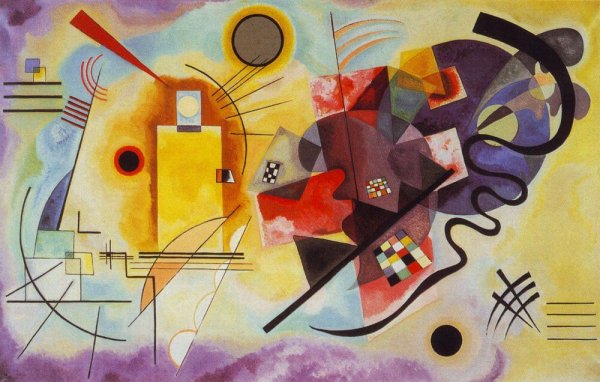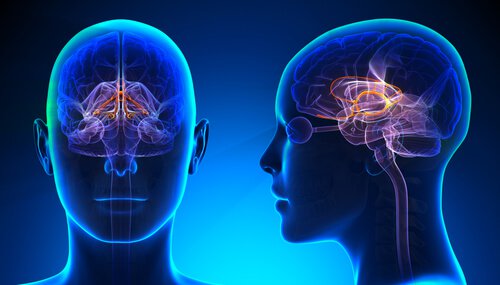What's Special About the Dreams of People With Depression?


Written and verified by the psychologist Valeria Sabater
While depression often causes discomfort and fatigue, the dreams of people with depression have a very specific goal: regulating their emotional world.
This is definitely a new topic, and one a lot of us don’t know much about. When we talk about depression, it’s common for the focus to be on a few specific things.
These are usually the symptoms, triggers, or different treatments we have. But we rarely look at the topic from the perspective of dreams.
That is, getting a better understanding of what happens in the brain of a person with depression when they finally manage to fall asleep.
We agree with Freud’s statement about how dreams are the royal road to the unconscious mind. That path might actually be a windy road that never take us anywhere. But it will definitely give spectacular views of what really goes on in our mind.
Dreams are evidence of a problem. They’re like an abstract Kandinsky painting. They try to tell us something, give a shape to what hurts, angers, scares, or threatens us.
The dreams of people with depression are a defense mechanism our brain uses to try to regulate the messy emotion.

The REM Phase in People with Depression
Doctor Rosalind D. Cartwright is a celebrated psychologist at the University of Cornell. She’s dedicated much of her life to researching and understanding the world of dreams.
In her well-known book, “The Twenty-Four Hour Mind,” for example, she goes into the interesting relationship between our emotions and our dreams.
It’s really an amazing effort of years and years of research where one idea really stands out. The brain makes an effort to help us process negative emotions — through dreams.
The way it does this is as fascinating as it is strange. Why? Because the person doesn’t actually notice how dreaming is helping them. But it does try to help through a series of different mechanisms. Let’s take a look at them…
The REM Phase and the Dreams of People with Depression
- Depressed people might be, for example, sleepy during the day and have a hard time falling asleep at night.
- When they wake up, they tend to feel fatigued. That’s because they didn’t have good, restorative night’s sleep. Quite the opposite. They feel like their head is even “fuller.” They know they dreamed a lot but they can never clearly remember what those dreams were about.
- What’s actually happening is that depressed people enter the REM phase much earlier. And this phase where dreaming happens usually lasts 3 times longer. That is, people with depression dream three times as much as people without it.
- We should also remember that we call REM sleep “paradoxical sleep” because it doesn’t bring any rest. In fact, it’s the period where we produce the most adrenaline.
- Thanks to new imaging and diagnostic tests, we’ve also been able to see something about the limbic system. It’s a system related to our emotions, and it’s more active than ever during the REM phase. This only happens with depressed people.

Dr. Cartwright explains how when we sleep, our brain takes control. The most significant aspect of this time, even more than getting restorative physical rest, is “pushing us” to work out our emotional knots.
Now, sometimes it does that in the worst way possible. It uses nightmares and unpleasant dreams, which also happens in the dreams of people with depression.
Everything that produces confusion, anxiety, or desperation in us will come out in this surreal, strange world. It’s our brain trying to regulate that negative emotion, trying to “detoxify” such mixed-up tension.
Rest Patterns in People with Depression
We’re aware that “dreaming” three times as much, having nightmares, and opening our eyes to a new day feeling tired, isn’t very useful when it comes to getting over depression.
If this information helps us with anything it should be in getting to know our enemy better. And really, we should understand that our brain is informing us there’s something we need to fix.
So, knowing this, it’s always a good idea to apply sleep strategies. They’re useful for improving the sleep of people with depression.
They can help us too if we happen to be going through a similar state. This is true whether it’s a minor depression, dysthymia, or a major depression.
- We should avoid intensifying our emotional load before we go to bed. Brooding thoughts will undoubtedly make our mood worse. This will make the REM phase last longer and dash our hopes of a good night’s sleep.
- Exercises like meditation or any other relaxation technique will be useful. They’ll help us go to bed with a less active brain.
- Also, if we take anti-depressants, it will be good for us to figure out what side effects they might have on our sleep, and consider switching medications if the effects are serious.
- And we need to adjust our circadian rhythms. We should try to follow a consistent schedule, where go to sleep and get up at the same time every day.

As we move forward in our treatment plan, our REM sleep will adjust itself. It will last less time and allow us to rest better. At the same time, our dream world will stop being so agitated, mysterious, or even terrifying.
Our brain will stop having to prioritize our emotions so it can do its normal nightly habits. At night it usually classifies important information, organizes experiences, and sends non-useful information away.
Our internal world will get back in balance. Nightmares and the shadow of depression will fade away…
This text is provided for informational purposes only and does not replace consultation with a professional. If in doubt, consult your specialist.








